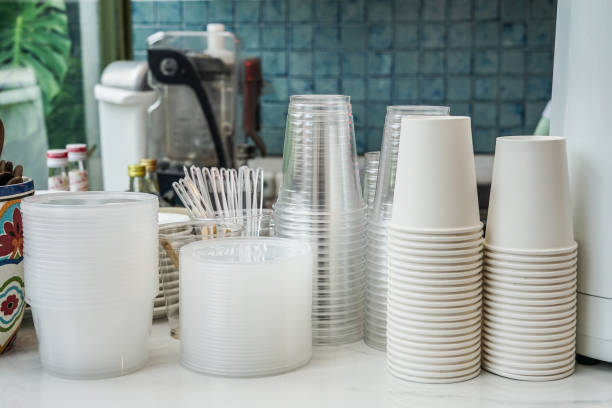
Understanding Bioplastics: A Brief Introduction
Bioplastics, also known as biodegradable plastic, are creating a buzz in the world of materials. Derived from renewable resources, these substances stand as promising alternatives to traditional plastics, which pose significant environmental challenges. As definitions go, bioplastics are a form of plastic derived from renewable biomass sources such as corn starch, and food waste, among others, as opposed to conventional plastic derived from petroleum.
However, it is worth noting that not all bioplastic categories are biodegradable, and even within the biodegradable category, some require specific disposal procedures to decompose completely. On the other hand, some non-degradable bioplastics represent a significant step forward due to the renewable nature of their raw materials, therefore offering a smaller carbon footprint than petroleum-based products. As with every material, assessing bioplastics pros and cons is imperative to understanding their potential usability and impact.
Sources of Bioplastics: Plant-Based Innovations
Bioplastics bear their origins in an array of plant-based raw materials, signifying a significant shift away from fossil fuel-based traditional plastics. Several types of bioplastics have emerged, each derived from unique plant sources and used for different applications.
| * Types of Bioplastics | * Source | * Application Fields | * biodegradability |
| Polylactic Acid (PLA)(most common forms of bioplastics) | made from fermented plant starch (usually corn) | PLA plastics are utilized across various sectors, from food packaging to medical implants. | PLA plastics require industrial composting facilities to degrade efficiently |
| Polyhydroxyalkanoates (PHAs) | produced by bacteria fed on glucose or starch | wide range of uses from plastic films and packaging to agricultural films | PHAs are best known for their biodegradability in marine environments |
| Starch-based bioplastics(one of the earliest forms of bioplastics) | These materials mainly come from corn, potatoes, or rice | They are often used in the production of bags, packaging materials, and cutlery, among others | Starch-based bioplastics are partially biodegradable |
| Bio-derived Polyethylene (bio-PE) | produced from ethanol derived from sugarcane | wide range of uses from packaging to automotive parts | It’s not biodegradable, but the carbon footprint of bio-PE is inferior to petroleum-based PE plastics. |
| Polybutylene Succinate (PBS) | produced chemically | PBS is commonly used in the packaging, agriculture, and textile industries | although produced chemically, PBS is both compostable and biodegradable |
Food Packaging: Current Scenario and Environmental Impact
Moving our focus to food packaging, we realize that it is a formidable contributor to our struggle with plastic waste. The omnipresence of traditional plastic, the go-to material for everything from grocery bags to takeaway containers, combines with its destructive environmental footprint, giving rise to an alarming situation.
Produced from non-renewable petroleum products, conventional plastics exacerbate greenhouse gas emissions and leave a legacy of resistant waste. As such, the durability and shelf-life of these plastics, once considered beneficial, now contribute to an enduring problem.
Herein lies the perceived value of bioplastics. With their purported environment-friendly characteristics, the integration of bioplastics into food packaging seems to mark a logical progression. However, the crucial question remains: Do the inherent benefits of plastic such as durability, low weight, and functionality outweigh their non-degradable nature? Such aspects form a significant part of the ongoing conversation surrounding bioplastics pros and cons.
What are some examples of bioplastic use in food packaging?
Bioplastics are increasingly making their way into various applications in food packaging, thanks to their potential to reduce environmental footprints. Here are some examples:
| Food Containers | From salad boxes to containers for takeaway meals, bioplastic alternatives are becoming more widely available. They often come in the form of polylactic acid (PLA) containers, offering a compostable solution. | |
| Beverage Cups | 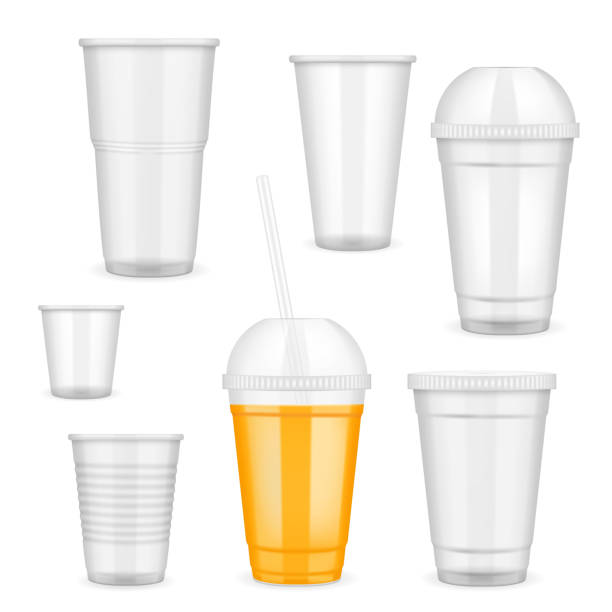 | Cold drink cups made from bioplastics, typically PLA, are one of the more prevalent examples of bioplastics in food packaging. You may have sipped a refreshing iced coffee or smoothie from one of these. |
| Straws |  | As municipalities and businesses move away from conventional plastic straws, bioplastic alternatives are stepping in. These are often made of PLA and are designed to be compostable under industrial composting conditions. |
| Food Bags | 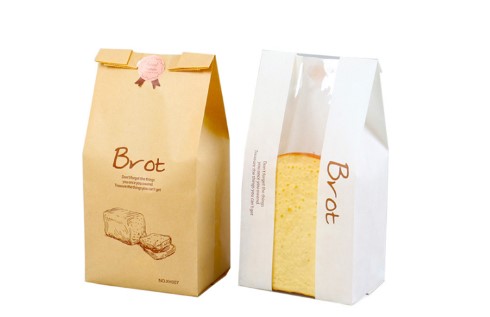 | Biodegradable and compostable bags for items like groceries, bread, or produce are perhaps one of the most well-known bioplastic products. They’re commonly made from Starch Blends. |
| Bowls | 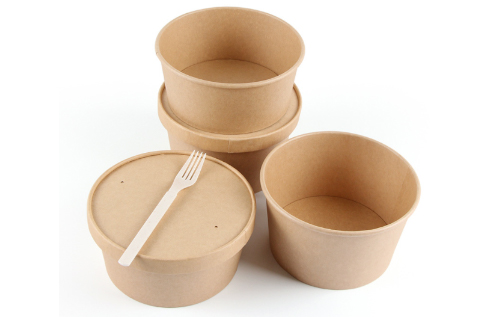 | Bioplastic bowls are becoming a common sight in food service, particularly for takeaway meals. They offer a more eco-friendly alternative to traditional plastic bowls. |
| Takeout Boxes | 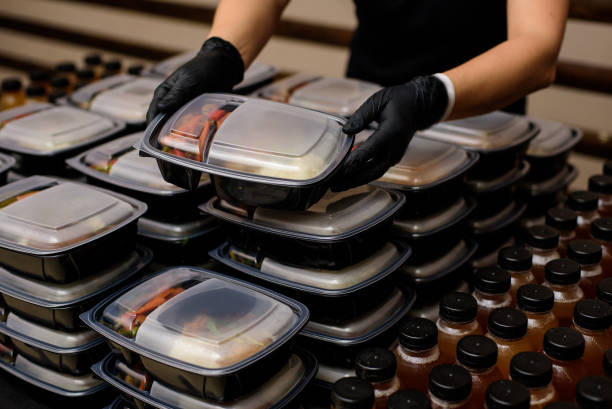 | More and more eateries are turning to takeout boxes made from bagasse (a byproduct of sugarcane processing), molded fiber, or other types of bioplastics. These containers are designed to be compostable, making them a highly sustainable option for food packaging. |
| Cutlery |  | Being used once and often for just a few minutes, cutlery represents a significant single-use plastic problem. That’s where compostable cutlery made from bioplastic comes in. You might’ve already used PLA-based forks, spoons, or knives in your last picnic or office party. |
In the coming years, as research and technology advance, we’ll likely see even more innovative uses of bioplastics in food packaging. However, a comprehensive understanding of bioplastics, their pros and cons, including their disposal, remains essential.
Bioplastics vs Traditional Plastics in Food Packaging: A Comparative Analysis
The comparison of bioplastics and traditional plastics in food packaging essentially boils down to their respective pros and cons.
| * Biodegradable Plastics | * Traditional Plastics | ||
| Pros: | Sustainable Raw Materials: Bioplastics are derived from renewable resources like corn, sugarcane, and food waste, reducing dependency on fossil fuels. Lower Carbon Footprint: The production of bioplastics generally releases fewer greenhouse gas emissions compared to traditional plastics, contributing positively to climate action efforts. Potential for Biodegradability: Certain types of bioplastics can degrade in suitable environments, lessening the burden of plastic waste in landfills. | 🆚 | Durability: Traditional plastics are resistant to damage and provide a protective barrier for food, enhancing the product’s shelf life. Lightweight: Conventional plastic packaging is lightweight, reducing transportation costs and associated carbon emissions. Cost-Effective: Traditional plastic materials are often cheaper to produce than bioplastics. |
| Cons: | Confusion in Disposal: Not all bioplastics are biodegradable, which can lead to confusion in waste management and improper disposal. Land Use Conflicts: The production of biomass for bioplastics could potentially conflict with agricultural land for food production. Industrial Composting Required: Some bioplastics need specific industrial composting conditions to decompose properly, which may not be widely available. | 🆚 | Non-Renewable Source: Traditional plastics are derived from petroleum, a non-renewable resource that contributes to environmental degradation. Long Decomposition Time: Traditional plastics can take hundreds of years to break down, often ending up polluting our lands and oceans. Toxic Chemical Release: As they break down, some plastics release toxic chemicals into the environment, causing further environmental harm. |
Recognizing these distinct qualities, businesses and consumers can make more informed decisions in their choice of packaging materials. The fight towards sustainable practices involves addressing these bioplastics pros and cons.
Exploring the Pros of Bioplastics in Food Packaging
Embracing bioplastics in the food packaging industry offers several advantages. Firstly, the manufacturing process of bioplastics emits fewer greenhouse gases compared to their conventional counterparts, which is a considerable step towards mitigating climate change.
The base materials for bioplastics, such as corn, food waste, and other plant-based raw materials, are renewable, offering both sustainability and the possibility of a more circular economy. Some bioplastics are also biodegradable under certain conditions, potentially reducing the volume of waste destined for landfills.
Another benefit lies in the sector of waste management: when biodegradable plastics are disposed of under appropriate conditions, they can break down without leaving harmful toxins behind, unlike traditional plastics.
As consumers become increasingly environmentally conscious, the use of bioplastics can also offer businesses a competitive advantage, meeting consumers’ demands for more sustainable packaging options. However, it’s important to remember that while the pros of plastic can’t be disregarded, the cons of plastic—particularly concerning environmental impacts—often outweigh them.
The Environmental Friendly Side of Bioplastics
As the consequential environmental impact of traditional plastics becomes increasingly apparent, the introduction of bioplastics has ignited a beacon of change. Among the most alluring attributes is the capacity of some bioplastics to degrade, thereby potentially reducing the magnitude of non-biodegradable waste plaguing our lands and seas.
Furthermore, feeding into the cycle of a circular economy, the raw materials for bioplastics are renewable, which provides an advantage over non-renewable petroleum-based plastics. Even during their production, bioplastics contribute significantly less to greenhouse gas emissions than traditional plastics—a decisive factor in the current struggle against climate change.
Yet, despite these perceivable benefits, the environmental contribution of bioplastics is not wholly positive. A balanced interpretation of the environmental impact demands a more nuanced understanding of the bioplastics pros and cons. There exist considerable problems associated with biodegradable plastics, from the land required for their biomass production to the complex and specific composting conditions needed for them to degrade.
The consequences of these challenges should be understood and factored into any decisions about the transition towards bioplastics in food packaging.
Reducing Carbon Emissions with Bioplastics
A key advantage of bioplastics lies in their potential to reduce carbon emissions. Traditional plastic production is a highly energy-intensive process involving petroleum extraction and refining, both of which contribute significantly to greenhouse gas emissions.
On the flip side, bioplastics, derived from plant raw materials, have a double effect on carbon sequestration. Firstly, the plants absorb carbon dioxide during their growing phase, which counteracts greenhouse gas emissions. Secondly, the use of these plant-based materials in place of petroleum not only reduces our reliance on finite fossil fuels but also reduces the carbon emissions associated with the production process.
Some studies suggest that replacing traditional plastics with bioplastics could result in a 25% reduction in carbon dioxide emissions, supporting the fight against climate change. However, it’s crucial to remember these potential benefits need to be balanced against the cons about plastic, primarily their ability to fully degrade without leaving toxic leftovers.
Enhancing Food Safety with Bioplastics
Food safety forms another crucial context in the bioplastic discussion. Bioplastic products, being generated from natural materials, pose less of a threat in terms of chemical pollution. Certain petroleum-based packaging materials could potentially leach harmful chemicals into food, particularly under high temperatures. Bioplastics present an alternative with a lesser risk of such chemical leaching, making them a safer choice for food packaging in many cases.
Moreover, being derived from renewable resources like corn or sugar cane, there’s the argument that bioplastics could indirectly support food safety by lessening the soil and water pollution associated with oil drilling and petroleum refining.
How does the manufacturing process of bioplastics compare to conventional plastic?
When comparing the manufacturing processes of bioplastics and traditional plastics, significant differences emerge, largely stemming from the materials used.
Traditional plastics are manufactured from petroleum, a non-renewable resource. The petroleum is processed and converted into polymers, forming the basis for different types of plastics. This production process is energy-intensive and contributes substantially to greenhouse gas emissions.
Bioplastics, on the other hand, are derived from renewable plant resources such as corn, sugarcane, or cassava. The process typically involves fermenting sugars from these crops to produce polylactic acid (PLA), a common type of bioplastic. Other bioplastics, like Polyhydroxyalkanoates (PHA), are produced from microorganisms that consume plant sugars. Although the production process also requires energy, it’s generally considered more sustainable due to the renewable nature of the inputs and the lower carbon emissions.
However, it’s essential to note that the sustainability of both processes heavily depends on factors such as source material production, energy use in manufacturing, and final product disposal.
Future Trends in Bioplastics: Innovation and Market Growth
With concerns about environmental sustainability becoming increasingly pivotal, the future of bioplastics appears promising. Innovation in this area continues to grow, and manufacturers are progressively finding ways to increase product efficiency and reduce costs.
The global market for bioplastics is also expanding with more companies turning their attention towards these alternatives. Analysts predict that the bioplastics market will witness substantial growth over the medium term, impacting everything from food packaging to more niche applications.
However, to overcome the disadvantages of bioplastics and maximize their potential benefits, continuous research and development will be crucial. Only by doing so can the deployment of bioplastics be both sustainable and effective.
Advantages of Bioplastic Packaging for the Food Industry
For businesses in the food industry, integrating bioplastic packaging into their operations can offer several advantages. Here are some compelling reasons to consider making this transition:
Embracing Environmental Responsibility
By shifting to bioplastic packaging, companies can lower their environmental footprint, contributing positively to global sustainability efforts. This shift signals a commitment to environmental responsibility, aligning the brand with the values of environmentally-conscious consumers.
Enhancing Brand Image and Reputation
As consumers become increasingly aware of environmental issues, companies using bioplastic packaging could boost their brand image and reputation. Showcasing a commitment to sustainability can differentiate a brand from its competitors and foster a stronger emotional connection with consumers.
Meeting Customer Demand for Sustainability
More and more consumers prioritize sustainability when making purchasing decisions. By offering environmentally-friendly packaging, companies can appeal to this growing demand and potentially drive customer loyalty.
Potential Cost Reductions
The price of petroleum-based plastics is tied to the volatile oil market. In comparison, the costs of producing bioplastics, especially those made from food and industrial waste, are likely to decrease in the future as technology improves and economies of scale come into play.
Reaping Regulatory Benefits
As legislation becomes increasingly environment-focused, companies using bioplastics might benefit from regulatory incentives or avoid future penalties associated with traditional plastic use.
Aligning with Sustainable Development Goals
The transition to bioplastics aligns businesses with the United Nations’ Sustainable Development Goals (SDGs), particularly those related to responsible consumption and production, climate action, and partnership for the goals.
It’s important to understand that while bioplastics come with considerable advantages, they are not a silver bullet for all environmental challenges posed by packaging waste. Therefore, the adoption of bioplastic packaging should be part of broader sustainability strategies that might also include waste reduction, recycling programs, or life-cycle analyses of products. A thoughtful and comprehensive approach will maximize the benefits and mitigate any potential downsides in the transition to bioplastics.
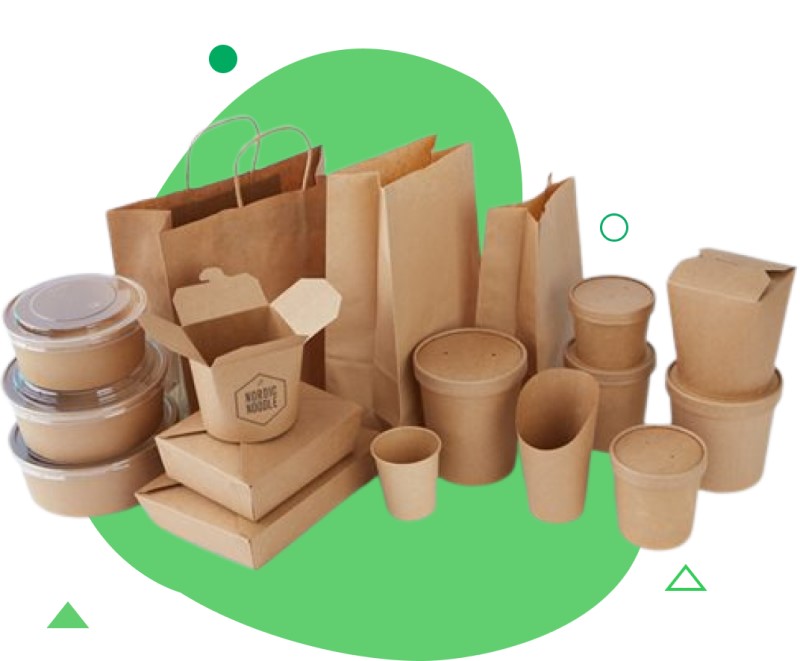
Embracing Bioplastic Packaging: Next Steps for the Food Industry
As the world grows more environmentally conscious, businesses in the food industry have a unique opportunity to mirror this shift in their operations as well. Embracing bioplastic packaging can be a significant step toward sustainability, but it demands strategic planning and thoughtful execution.
Here are key steps for businesses in the food industry seeking to adopt bioplastics:
Evaluate the Potential of Bioplastics
Understand the specifics of bioplastics and how they relate to your business—this includes analyzing the cost, functionality, and consumer perception of bioplastic packaging in comparison to traditional alternatives.
Identify Suitable Bioplastic Alternatives
Once you understand the different types of bioplastics and their respective properties, identify which ones serve your packaging needs best. Not all bioplastics are created equal and, as such, they could offer varying benefits based on your specific requirements.
Engage with Suppliers
Talk to your packaging suppliers about their bioplastic offerings. Exploring the market will give you a better sense of the pricing, availability, and types of bioplastic packages that fit your needs. Yoon uses the most common form of bioplastics, the Polylactic Acid (PLA) as our main material for not only the plastic packaging but also the coating layers for the paper packaging. Contact Yoon to Know More Details Today!
Educate Your Consumers
It’s essential to provide education to your consumers about why you’re switching to bioplastics and what it means for them. Ensuring your customers understand how to dispose of your bioplastic packaging will be crucial to realizing its environmental benefits.
Pilot and Experiment
Before making a wholesale switch, consider running a pilot program to test the use of bioplastics in your operations. Gather feedback from customers and employees about their experiences with this new material.
Evaluate and Adapt
Once you have implemented the use of bioplastics, take the time to assess their impact on your business and make any necessary adjustments. See how well they fit into your existing processes and measure their acceptance among customers.
By following these steps, businesses can begin integrating bioplastics into their food packaging strategies. Equally essential is maintaining a grasp on the evolving marketplace of bioplastics and ongoing consumer demands. With the right strategies in place, businesses can leverage the advantages of bioplastics and contribute to a more sustainable future.
How do the recycling and disposal processes of bioplastics work?
The recycling and disposal of bioplastics require careful handling and specific processes due to their unique composition.
For effective decomposition, many bioplastics need highly controlled composting conditions typically found in industrial composting facilities. These conditions—specific temperatures, timing, and presence of microbes—allow biodegradable bioplastics to break down completely. However, it’s important to note that not all regions have these facilities available, which can complicate bioplastic disposal.
When it comes to recycling, bioplastics cannot be processed together with conventional plastics due to their different base components. Mixing bioplastics with traditional plastic waste can contaminate the recycling stream, resulting in lower-quality recycled plastic.
Therefore, separate recycling streams for bioplastics and conventional plastics are needed. However, as bioplastics make up a small portion of overall plastic use, not all municipalities and waste management facilities have implemented these separate streams, leading to further complexities.
Another disposal method for some bioplastics is energy recovery, where the materials are incinerated to recover energy. However, this process should only be used when the other options—recycling and composting—are not available, as it doesn’t contribute to resource circularity.
What are some common misconceptions about bioplastics in food packaging?
There are several misconceptions surrounding the use of bioplastics in food packaging.
All bioplastics are biodegradable: This is untrue. While some types of bioplastics are designed to be biodegradable or compostable, others are not.
Bioplastics can be discarded in a backyard composter: Many bioplastics require industrial composting facilities to degrade completely. If simply thrown into a backyard compost heap or bin, many types of bioplastics will behave much like traditional plastics.
Bioplastics will fully degrade in the ocean: While certain bioplastics (like PHA) do biodegrade in marine environments, many others do not. Therefore, bioplastics should not be seen as a solution to marine plastic pollution.
Bioplastics have no environmental impact: While bioplastics generally have less of an environmental impact than traditional plastics, they aren’t completely devoid of issues. The production of crop-based bioplastics can lead to deforestation and disrupt food supply chains, demonstrating that a careful evaluation of bioplastics pros and cons is essential.
Closing Thoughts: Embracing Bioplastics for a Sustainable Future in Food Packaging
With mounting pressure to address environmental concerns, the turn of the tide towards bioplastics seems almost inevitable. Bioplastics offer an encouraging alternative to traditional plastics, with their renewable origins and potential for reduced carbon emissions being particularly appealing.
Contact Yoon Today To Know More Bio Solutions for Food Packaging.







